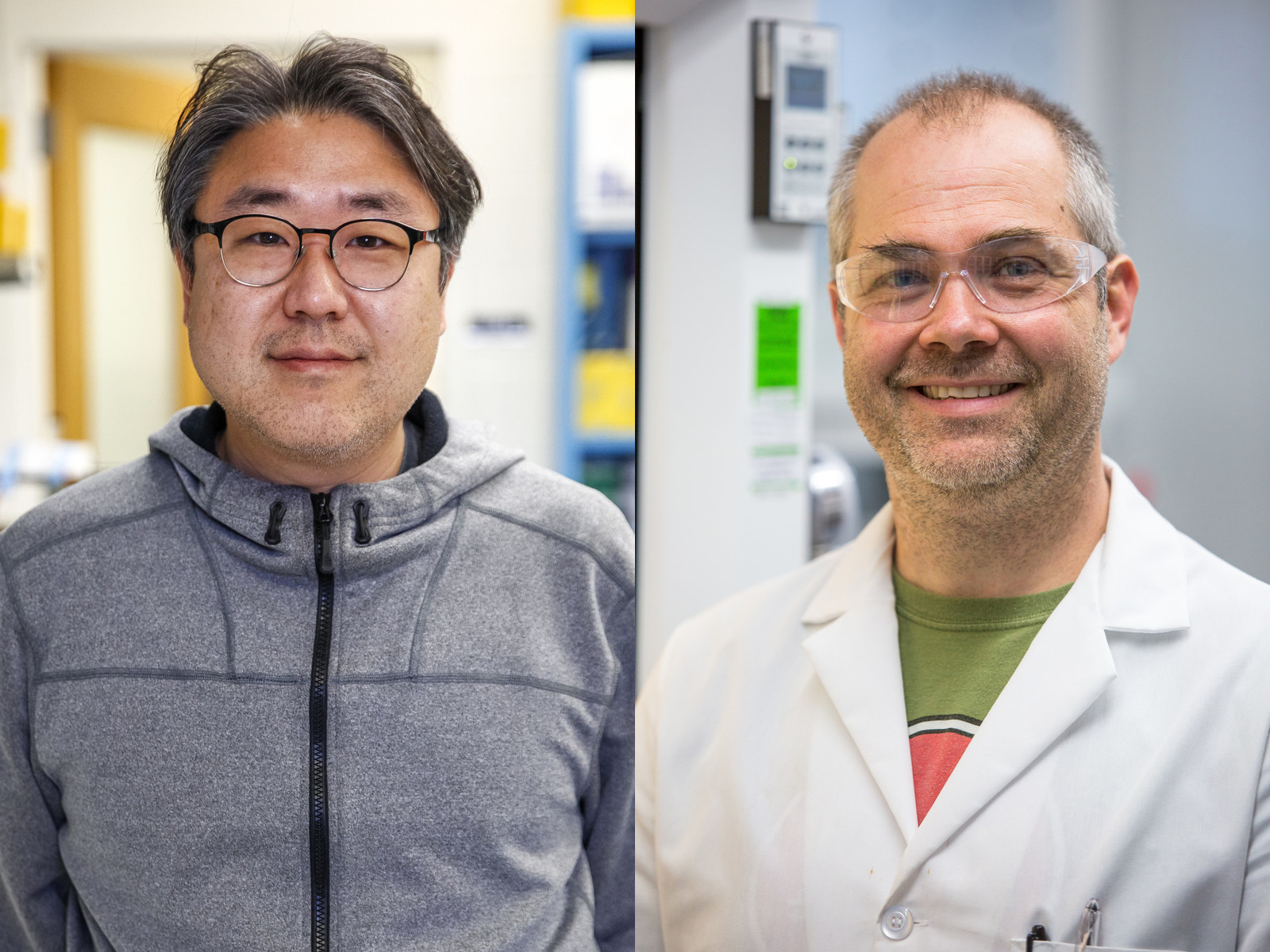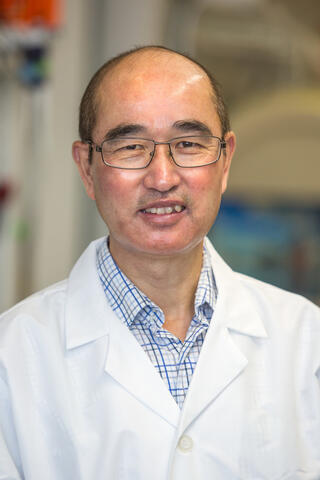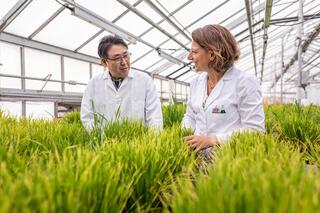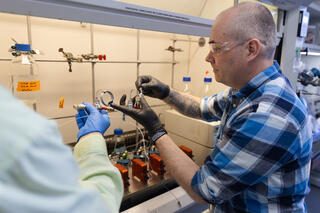
Steven Karlen and Sang-Jin Kim, both senior scientists with the Great Lakes Bioenergy Research Center, are the winners of the first Yaoping Zhang Bioenergy Research Award.
The award recognizes the outstanding productivity and dedication of GLBRC researchers to the center’s mission of bioenergy advancements.
Kim, a research assistant professor in the Brandizzi lab at Michigan State University, was recognized for his dedication and ingenuity in both basic and applied research on cell wall biology, particularly for his success in raising glucan levels in sorghum biomass.
“Sang Jin is an outstanding investigator tackling difficult challenges to the development of highly productive bioenergy crops,” said Federica Brandizzi, GLBRC science director and award committee co-chair.

Karlen, who joined the center in 2012, maintains instrumentation across labs, interprets analytic data for most research groups, and has a hand in identifying the GLBRC’s larger research directions.
The awards committee noted Karlen’s collaborations across teams and notable breakthroughs in lignin deconstruction and valorization. Karlen also stepped in as interim director of the metabolomics lab, where he led a team of young analytical scientists in support of GLBRC efforts to convert lignin and phenolic biomass components to valuable products.
“Steve is one of the most collaborative researchers in the center,” said Robert Landick, science director and award committee co-chair. “He has taken on increasing responsibilities within the center and worked with scientists across multiple teams.”
The award honors the memory of Yaoping Zhang, a senior scientist and generous collaborator who led GLBRC’s Experimental Fermentation Facility, made multiple key research contributions, and authored GLBRC publications from 2011 until his death in April 2024.

Mel Russell III/Michigan State University
Kim’s work focuses on the sugars hidden in the plant’s cell wall, which is made of cellulose, hemicellulose, pectin, and lignin. First focused on manipulating pectin to increase plant biomass, Kim is now focused on a particular kind of hemicellulose called mixed-linkage glucan (MLG).
In the Brandizzi lab, Kim and his team are engineering sorghum to increase its yield of MLG, a hemicellulose composed solely of glucose, which is easier to break down and convert to biofuels.
Kim's research has led to a greater understanding of where and how MLG is synthesized within the cell wall. Building on this foundation, his current research aims to modify energy sorghum to overproduce MLG while simultaneously manipulating MLG metabolism to limit the hemicellose's degredation.
Kim studied genetic engineering at Korea University and later earned a PhD in genetics from Iowa State University.
He said his expertise in plant genetics and cell biology did not initially align with the lab’s focus on the cell wall and its bioenergy potential. When he first arrived, Kim spent years studying the intricacies of the cell wall, which Brandizzi said led to multiple collaborations and successes.
His tenure with the center is marked by four patents and 25 publications.
“I was really excited, but I also wondered if I’m really eligible for this one because I know there are so many great researchers at GLBRC,” Kim said about the award. “It just feels like GLBRC acknowledged my 13 years of effort in the center, and that’s the one thing that I really appreciate."

An organic chemist by training, Karlen wears his passion on his sleeve. A tattoo of buckminsterfullerene, a soccer-ball shaped molecule with 60 carbon atoms covers his forearm.
His research focuses on the fraction of the lignin biomass that can be extracted to produce commodity chemicals at scale. Building on previous methods, Karlen and his collaborative team discovered a way to produce paracetamol, the active ingredient in Tylenol, from poplar biomass rather than petroleum-based feedstocks. The method is available for commercial licensing.
In 2023 alone Karlen produced six papers spanning the gamut of the center’s research goals.
“In the sciences, a lot of fields are studying the same phenomenon but from different perspectives,” Karlen said. “(The key is) being really comfortable in a room where you don’t understand 90% of what the conversation is and yet being able to contribute to it. Because you can learn, you can adapt.”